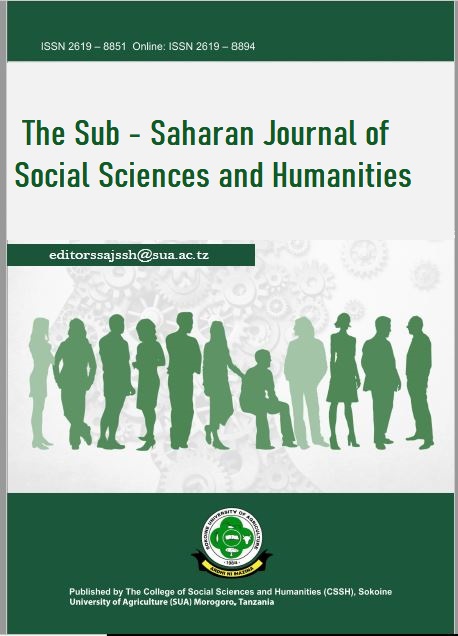Spatio-Temporal Variations in Physico-Chemical Properties of Freshwater Bodies in Pangani Basin, Tanzania: Implications for Catchment Land Management
Keywords:
Spatio-temporal variations, physicochemical properties, freshwater bodies, nutrient pollution, catchment land managementAbstract
The integrity of river basin ecosystems is closely intertwined with land development activities, which significantly influence water quality. Freshwater bodies in the Pangani Basin serve as receptors for both intentional and accidental material residues from land-based activities. Recent increases in agricultural and settlement activities have heightened nutrient loads in these aquatic systems, surpassing the natural capacity of ecosystems to assimilate and cycle these nutrients. This study investigated the spatio-temporal variations in the physicochemical properties of freshwater bodies within the upper Pangani River Basin. Water samples were systematically collected from Nyumba ya Mungu Dam, Kikuletwa River, Ruvu River, and Pangani River, utilizing a purposive sampling method to identify thirteen sampling points. Analysis of Variance (ANOVA) was employed to assess spatial and temporal variations in water quality parameters, including dissolved oxygen, turbidity, and chlorophyll-a, with a confidence level of 95% using SPSS software. Results revealed that dissolved oxygen concentrations were notably lower in the Pangani River (ranging from 0.2 mg/L in March to 2.8 mg/L in September) compared to the other sites. Turbidity peaked in the Kikuletwa River during May and June (354 FNU), while chlorophyll-a levels were highest in the Nyumba ya Mungu Dam (120 μg/L), with a mean value of 25±24 μg/L, in contrast to the rivers (P<0.05, df=155). The findings suggest that seasonal variations, particularly run-offs from agricultural land during rainfall, are significant contributors to Total Nitrogen levels in these freshwater bodies. The study underscores the need for effective catchment land management strategies to mitigate nutrient pollution and safeguard water quality.


